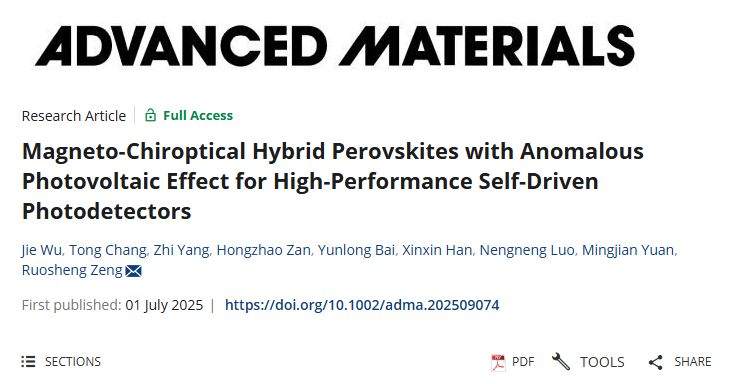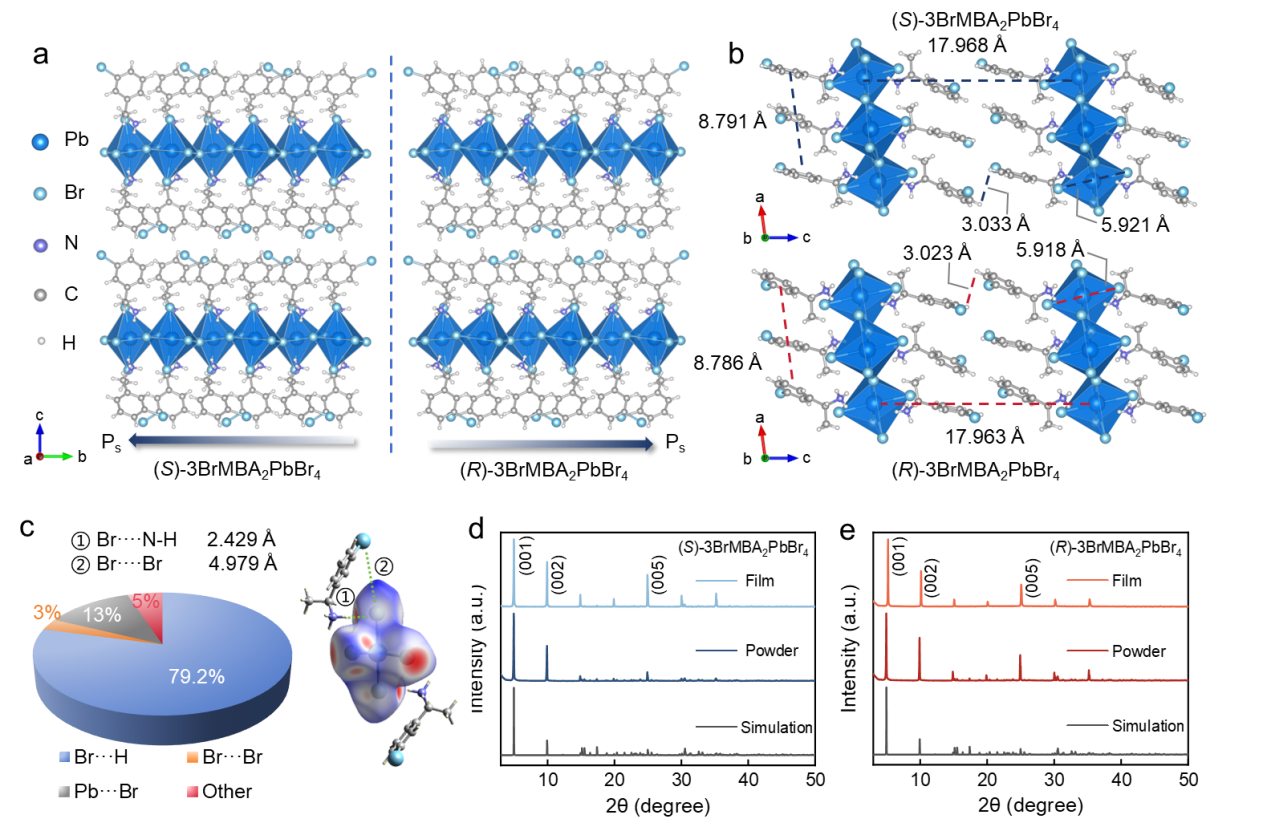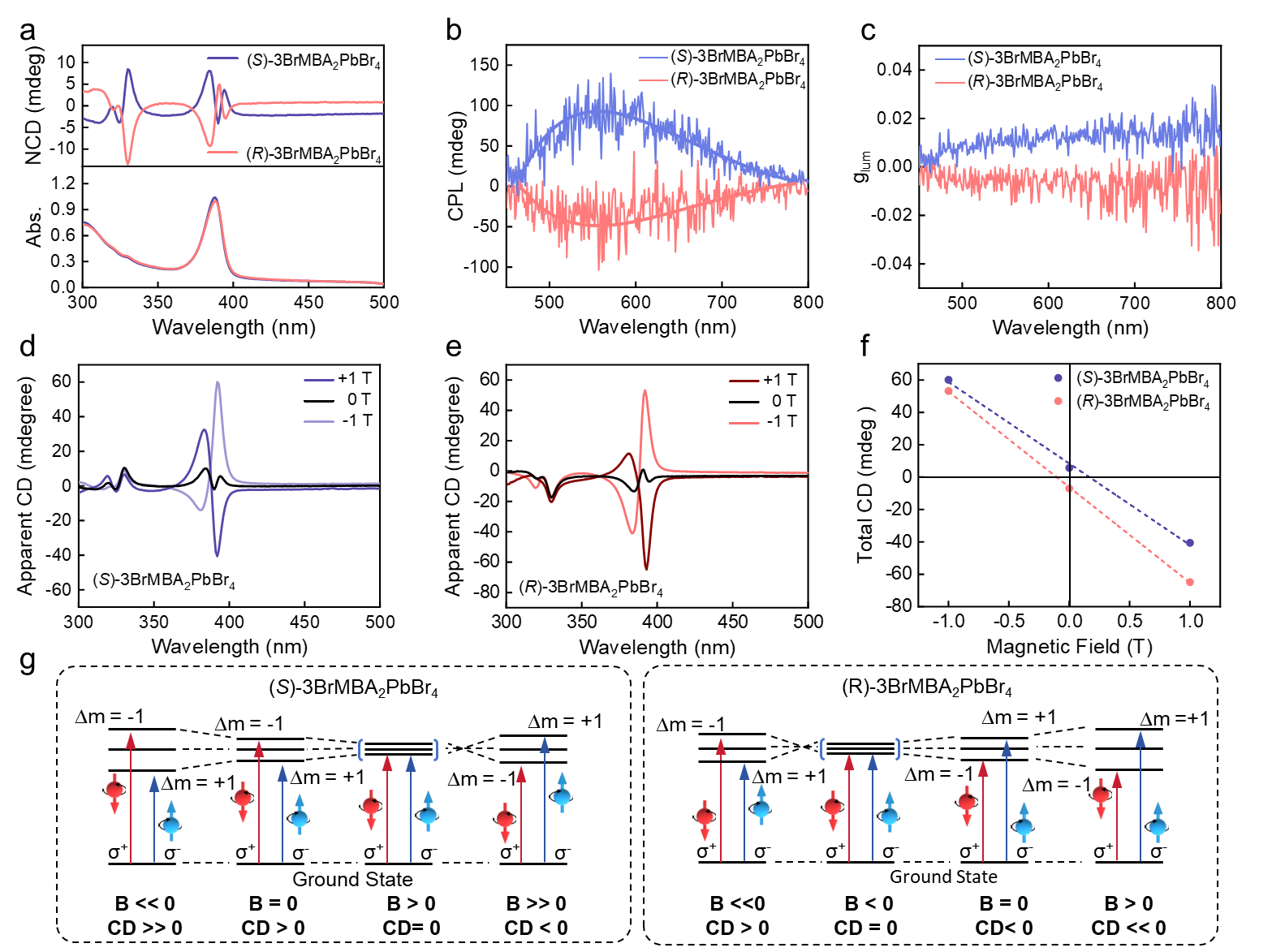Recently, the nanophotonics team from Guangxi University has achieved new breakthroughs in chiral perovskite polarization detection. The findings were published in the internationally renowned journal Advanced Materials under the title “Magneto-Chiroptical Hybrid Perovskites with Anomalous Photovoltaic Effect for High-Performance Self-Driven Photodetectors”. Wu Jie, a doctoral student of the 2023 cohort from the School of Physical Science and Technology, serves as the lead author, and the corresponding author is Prof. Dr. Zeng Ruosheng from the same school. Guangxi University serves as the first affiliation and the exclusive corresponding unit.

Conventional organic-inorganic hybrid perovskite photodetectors typically require external electric field drive, exhibit limited functionality, suffer from high energy consumption, and demonstrate mediocre polarization detection performance. To address these challenges, our nanophotonics team introduced chiral organic molecules to engineer two-dimensional chiral perovskite crystals with non-centrosymmetric structures.This material not only possesses outstanding spontaneous polarization characteristics (1.5 μC·cm⁻²) but also exhibits unique magneto-optical coupling effects. Under a 1 T magnetic field, its circular dichroism (CD) asymmetry factor increases by 8-fold, accompanied by signal inversion, with a Zeeman splitting energy reaching 0.3 meV. Furthermore, the material demonstrates exceptional nonlinear optical properties, achieving a circular polarization sensitivity of 0.87 for second-harmonic generation (SHG), far surpassing comparable materials. The self-driven photodetector fabricated from this material generates a remarkable photovoltage of 4.8 V under 405 nm ultraviolet illumination—significantly exceeding its bandgap (2.96 eV)—exhibiting a pronounced anomalous photovoltaic effect. The device achieves a responsivity of 583 at zero bias while maintaining excellent X-ray detection and circularly polarized light discrimination capabilities. These properties make the material highly promising for applications in portable medical imaging, security monitoring, and optical communications, offering a new pathway for developing next-generation, low-energy, multifunctional optoelectronic systems.

Figure 1. Structural Characterization of (R/S)-3BrMBA₂ PbBr₄

Figure 2. Circularly Polarized Optical Properties and Magneto-circular Dichroism (MCD) Spectra of (R/S)-3BrMBA₂PbBr₄
It is reported that Guangxi University’s nanophotonics team, rooted in interdisciplinary cutting-edge research, represents a collaborative research collective integrating expertise in chemistry, materials science, and physics. The team has achieved a series of innovative breakthroughs in exploring the luminescent properties and applications of high-performance perovskite materials.